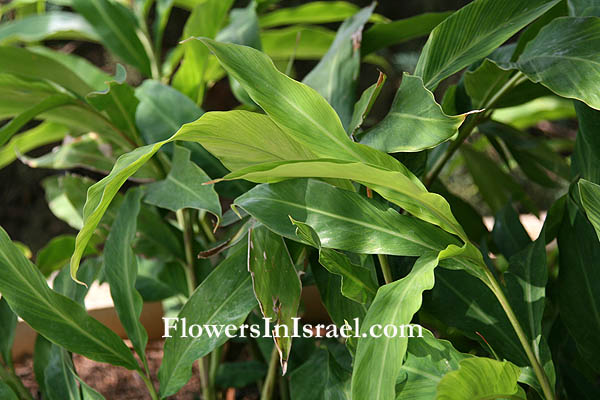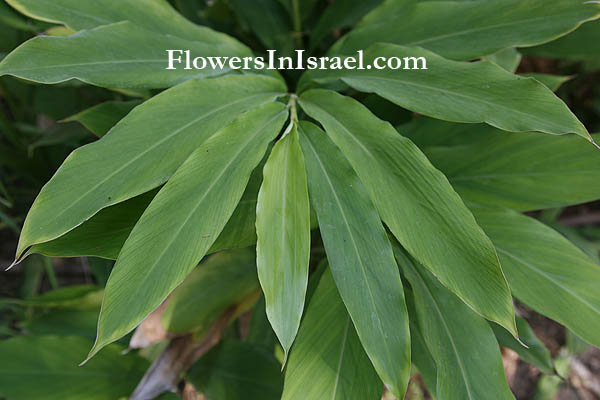הל
| Scientific name: | Elettaria cardamomum (L.) Maton | |
| Common name: | Cardamom | |
| Hebrew name: | הל | |
| Arabic name: | حَبُّ الهال , Hhabb el hâl (Habbu al hal) | |
| Family: | Zingiberaceae, זנגביליים |

|
| Life form: | Herbaceous perennial plant | |
| Stems: | 90-120cm high | |
| Leaves: | Alternate, linear-lanceolate, 40-60 cm long | |
| Inflorescence: | Separate, horizontal stems that spread along the ground; 30-60 cm loose panicles with many small blossoms | |
| Flowers: | White flowers each with a pink to violet-striped lip | |
| Fruits: | Fruit is a green, three-sided oval capsule containing 15–20 dark, hard, angular seeds | |
| Flowering Period: | March-April | |
| Origin: | India to Malaysia |

Derivation of the botanical name: Elettaria is derived from Rheed's Elettari, which, in the South Indian Language Tamil, means granules of leaf. The elettaria cardamomum is described by Rheed in vol. ix of his Hortus Malabaricus. On the Malabar coast the plant is called ailum cheddy. Cardamom is the dried, unripened fruit of Elettaria cardamomum. It grows wild in the Ghat Mountains on the Malabar Coast of SW India, in an area known as the Cardamom Hills.
The Cardamom plant mentioned by Linnaeus, in his Flora Zeylanica (1747), as "4 Amomum scapo bracteis alternis laxis caule breviore," may have been either the Malabar Cardamom ( Elettaria Cardamomum, Maton) or the Ceylon Cardamom {Elettaria major, Smith.) |